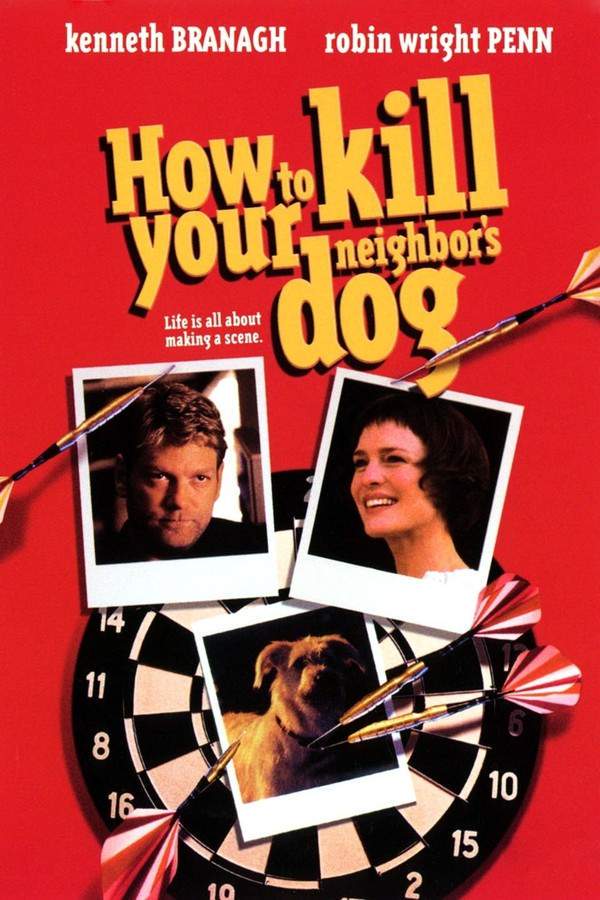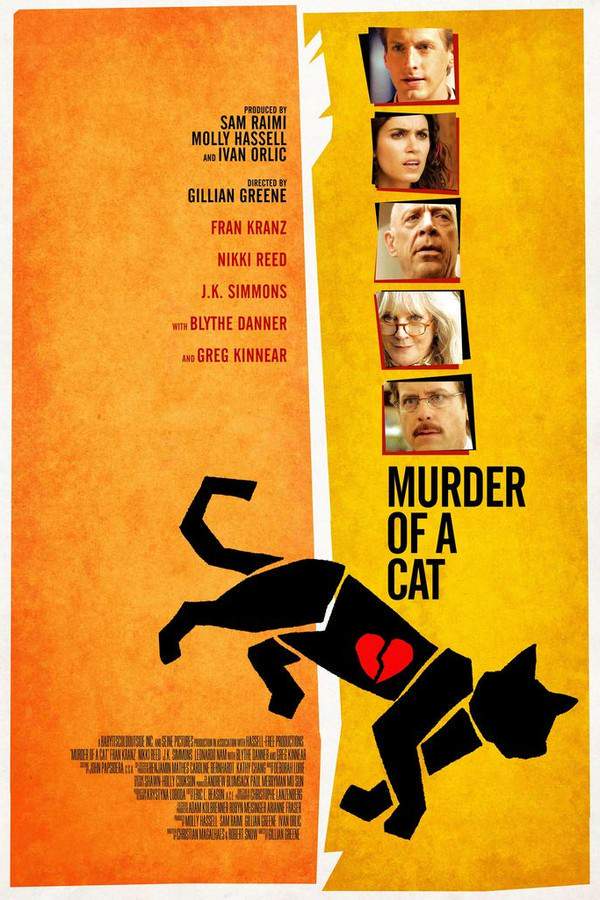
How to Kill Your Neighbor's Dog
Year: 2002
Runtime: 107 min
Language: English
Director: Michael Kalesniko
A struggling playwright finds his already chaotic life further complicated by a controlling mother-in-law, an overzealous fan, and an annoying neighborhood dog. Amidst the turmoil, he unexpectedly forms a friendship with his neighbor’s young daughter, Amy. Her creativity and innocence offer him inspiration, helping him overcome writer's block and face an uncertain future.
Warning: spoilers below!
Haven’t seen How to Kill Your Neighbor's Dog yet? This summary contains major spoilers. Bookmark the page, watch the movie, and come back for the full breakdown. If you're ready, scroll on and relive the story!
How to Kill Your Neighbor's Dog (2002) – Full Plot Summary & Ending Explained
Read the complete plot breakdown of How to Kill Your Neighbor's Dog (2002), including all key story events, major twists, and the ending explained in detail. Discover what really happened—and what it all means.
Peter McGowan, a once-celebrated British playwright living in Los Angeles, finds himself creatively barren, emotionally frayed, and far removed from the early acclaim that defined his career. Ten years into a slump, his latest productions have flopped, and he bears the marks of insomnia, heavy smoking, and a mounting sense of personal and professional failure. His current project, a last-ditch play directed by the flamboyant Brian Sellars, bears the weight of expectation as Sellars’s exuberant energy and fixation on one of the lead actresses ripple through the creative process, further unbalancing Peter’s fragile grip on his work. Amid this turmoil, his wife Melanie, Robin Wright, a patient and steadfast partner, longs for a baby, a desire Peter cannot satisfy, and the tension between them grows heavier with every conversation about family and future.
To complicate his already delicate balance, a loud new neighbor’s dog invades Peter’s sleepless nights, pushing him to wander the streets of Los Angeles after dark. On one such walk, he encounters a strange man who claims to be named Peter McGowan—a doppelgänger of sorts, eccentric, enigmatic, and unsettling in equal measure. The two men form an uneasy, strangely supportive friendship that unsettles Peter even as it offers him a mirror of his own flaws and yearnings. Meanwhile, Peter’s life becomes tangled with Amy Walsh, the shy, lonely daughter of the neighbors. Amy, who has mild cerebral palsy, becomes a quiet catalyst for Peter’s awakening. Their relationship begins awkwardly, with Peter resenting the disruption Amy’s family brings to his routine, yet he gradually discovers a genuine connection with her—one grounded in honesty, resilience, and a surprising openness that begins to soften his cynicism.
This growing bond with Amy also influences Peter’s work. He uses their conversations and mannerisms to craft authenticity for a child character in his script, a choice that stirs mixed reactions from his collaborators, who worry it crosses lines of exploitation. Melanie, who dreams of motherhood, begins to see Amy as part of their extended family, and their time together reshapes the dynamic of their home. The situation becomes more complicated when Amy’s mother Trina notices the shift and pulls back, hiring a new babysitter. Yet Amy resists this change, insisting that the babysitter contact Peter and Melanie to reaffirm the tie that binds them all.
Throughout the upheaval, Peter’s insecurities are pressed from every direction. A televised talk-show mockery of his string of failures gnaws at his already fragile ego, amplifying his fear of irrelevance. In parallel, Melanie—an accomplished dancer—teaches Amy how to move with grace, and they stage a small recital to celebrate their fragile, fragile progress. Amy performs with courage, but a stumble or two triggers embarrassment in Trina, who halts the music in a moment of painfully public frustration. Peter’s patience snaps, and he accuses Trina of being the principal obstacle to Amy’s happiness and potential, a confrontation that reveals how deeply he has come to care for this young girl.
The plot takes a shocking turn when the noisy dog is mysteriously shot. Neighbors quickly suspect Peter, and the authorities close in. The investigation leads to the arrest of Peter’s doppelgänger after he is found with a rifle, seemingly connecting him to the crime and forcing Peter to confront the corrosive bitterness and misanthropy that have taken root in his life. In the wake of the incident, Amy’s mother decides to move away, and the emotional farewell between Amy and her new guardians is heartrending. Amy’s departure leaves Peter and Melanie with a renewed, yet tempered, sense of hope as they resume their attempts to conceive. The little girl’s brief, meaningful presence has left an indelible mark, reminding them of the power of empathy, connection, and the possibility of renewal.
In the end, this story is not about violence or revenge but about midlife crisis, the erosion and rediscovery of inspiration, and the redemptive capacity of human connection. Through dark humor and tender relationships, the film portrays a flawed man who, despite his flaws and failures, finds a glimmer of light in the most unexpected places, a testament to the quiet ways that people can alter each other’s lives.
In the final assessment, this is a nuanced meditation on how ordinary encounters—whether with a dog, a doppelgänger, or a child—can catalyze a shift from bitterness to generosity, from isolation to belonging. The emotional core rests with Melanie, whose steady love and quiet strength, enacted by [Robin Wright], anchors Peter’s tumultuous journey and reveals how redemption can emerge from acts of care and openness.
Last Updated: October 14, 2025 at 04:08
Unlock the Full Story of How to Kill Your Neighbor's Dog
Don't stop at just watching — explore How to Kill Your Neighbor's Dog in full detail. From the complete plot summary and scene-by-scene timeline to character breakdowns, thematic analysis, and a deep dive into the ending — every page helps you truly understand what How to Kill Your Neighbor's Dog is all about. Plus, discover what's next after the movie.
How to Kill Your Neighbor's Dog Timeline
Track the full timeline of How to Kill Your Neighbor's Dog with every major event arranged chronologically. Perfect for decoding non-linear storytelling, flashbacks, or parallel narratives with a clear scene-by-scene breakdown.

Characters, Settings & Themes in How to Kill Your Neighbor's Dog
Discover the characters, locations, and core themes that shape How to Kill Your Neighbor's Dog. Get insights into symbolic elements, setting significance, and deeper narrative meaning — ideal for thematic analysis and movie breakdowns.

Similar Movies to How to Kill Your Neighbor's Dog
Discover movies like How to Kill Your Neighbor's Dog that share similar genres, themes, and storytelling elements. Whether you’re drawn to the atmosphere, character arcs, or plot structure, these curated recommendations will help you explore more films you’ll love.
Explore More About Movie How to Kill Your Neighbor's Dog
How to Kill Your Neighbor's Dog (2002) Scene-by-Scene Movie Timeline
How to Kill Your Neighbor's Dog (2002) Movie Characters, Themes & Settings
How to Kill Your Neighbor's Dog (2002) Spoiler-Free Summary & Key Flow
Movies Like How to Kill Your Neighbor's Dog – Similar Titles You’ll Enjoy
The Neighbor (2018) Full Movie Breakdown
Wiener-Dog (2016) Movie Recap & Themes
Good Neighbors (2011) Full Movie Breakdown
A Kind of Murder (2016) Story Summary & Characters
Murder of a Cat (2014) Full Summary & Key Details
The Friend (2025) Ending Explained & Film Insights
Dog (2017) Spoiler-Packed Plot Recap
Baxter (1989) Ending Explained & Film Insights
Just Neighbors (1919) Spoiler-Packed Plot Recap
Love Thy Neighbour (1973) Spoiler-Packed Plot Recap
That Certain Woman (1937) Complete Plot Breakdown
The Neighbor (1993) Spoiler-Packed Plot Recap
The Neighbour (1992) Story Summary & Characters
Lawn Dogs (1997) Complete Plot Breakdown
The Dog Lover (1962) Ending Explained & Film Insights

















